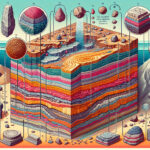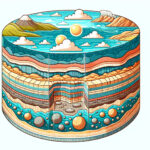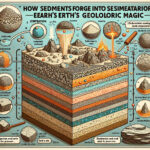Unveiling Earth’s Rocky Evolution
Picture a towering cliff face with layers upon layers of colored stone or the ripple marks on a slab of sandstone. These are the pages of Earth’s dynamic history etched into sedimentary rocks. Now, imagine if those rocks could tell you the story of their transformation into the beautiful, crystalline metamorphic rocks. That’s the tale we’re about to unravel!
Our journey begins with the rock cycle, Earth’s geological recycling system. It’s the vital process through which rocks are born, broken down, and reborn anew. Sedimentary rocks, formed from the compressed grains of previous rocks or organic matter, hold a treasure trove of Earth’s past. But what happens when these rocks, which have been resting for millennia, suddenly decide to metamorphose?
Metamorphosis, in geology as in life, is all about change under pressure—literally. Sedimentary rocks get buried under kilometers of other rocks and are subjected to intense heat and pressure. These conditions, different from those at the Earth’s surface, create a crucible for change. Minerals within the sedimentary rock, no longer stable in their current state, adapt by re-crystallizing or reorienting to form the new, durable textures of metamorphic rock.
Let’s take a field trip to the Himalayas, an impressive metamorphic library, where the colossal clash between the Indian and Eurasian tectonic plates furnishes perfect examples of such transformation. The force of the collision compacts sediment layers and the heat generated from the movement transforms these layers into the iconic, shimmering schist and gneiss of the mountain range.
This information is not just a gold mine for geology enthusiasts; it’s the bread and butter of professionals. By understanding these transformations, geologists can interpret the environment of the past and how our planet works at a deeper level. It’s this knowledge that guides everything from mineral exploration to assessing the stability of the very ground beneath our feet.
To get a better insight into this transformative journey from sedimentary to metamorphic, check out this video:
Every metamorphic rock can tell a story of power and resilience. They serve as windows into the intense pressures and temperatures that have shaped every inch of our planet. Understanding this segment of Earth’s rocky evolution brings us much closer to deciphering the complex narrative of the terrain we tread.
“`html
From Layered to Solid: The Story of Sedimentary Rocks
Sedimentary rocks are quite literally the pages of Earth’s diary, stretching back through eons of time. These geological storybooks are built layer by layer, as particles of sand, silt, and clay settle into place, often carried by water or wind. Over long periods, these layers become compressed, solidifying into the rocky strata that reveal so much about our planet’s past. But there’s more to these rocks than meets the eye; these storied formations are also teeming with the fossilized remnants of ancient life forms, providing a crucial link to understanding the biological history of Earth.
Why do we study these stony archives? Sedimentary rocks are pivotal for unlocking secrets of the Earth’s history. They capture and hold stories from millions of years ago, offering snapshots of the environments of ages past. Their structures, textures, and content can clue us into past climates, the movement of the continents, and the evolution of life on Earth.
While we don’t have an internal link on the study of Earth’s history specifically, exploring our natural world offers countless insights into how our planet has shaped the home we know today. From grand canyons chiseled by mighty rivers to expansive deserts with dunes whispering the tales of winds long gone, every landform provides a piece of the vast geological puzzle.
To peek into this transformative journey, watch this insightful video, depicting the intricate process that turns sedimentary rocks into their metamorphic counterparts:
The study of these rocks is more than academic; they are resources that influence our daily lives. Imagine our world without the sandstone and limestone used in construction, the coal powering industries, or the natural gas heating our homes. These resources all begin as unassuming sediment, only to be transformed over millennia into the foundations of modern society.
“`
Metamorphism: The Art of Rock Transformation
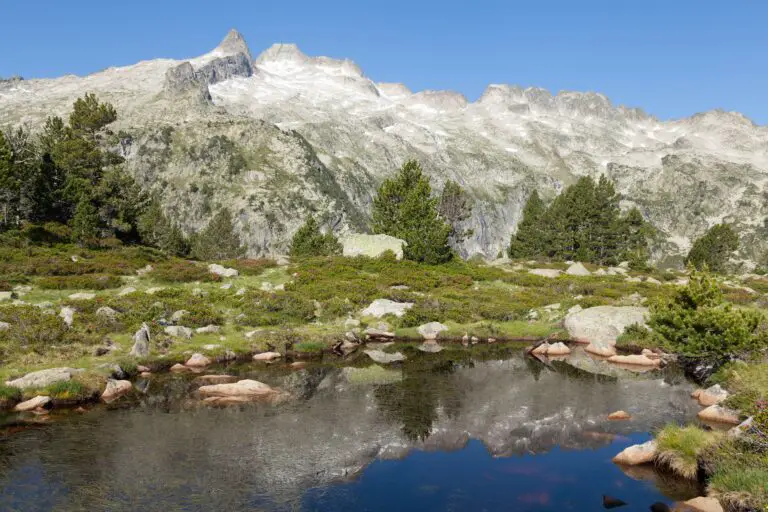
Imagine you’re a humble rock, nestled comfortably in the sedimentary family. You boast layers upon layers, each telling a tale of ancient rivers, deserts, or oceans. But then, your world is quite literally shaken! You’re thrust deep into the Earth’s crust. Yes, we’re talking metamorphism, the remarkable process that turns everyday sedimentary rocks into stunning metamorphic marvels.
This isn’t just any change; it’s a profound transformation that requires extreme conditions—intense heat, immense pressure, or chemically active fluids. These are the ingredients required to bake a sedimentary rock into its new form. It’s not a quick recipe, either. This alchemy can take millions of years, and the rock may travel great distances within the Earth before emerging reborn.
Various factors drive this metamorphic makeover. The heat needed could come from magma invading the rock’s personal space or just from the unbearable weight of overlying layers. Pressure, the relentless force from all sides, squeezes the rock’s minerals into new, more compact arrangements. And as for fluids, they act like molecular chefs, introducing new elements that facilitate the growth of new minerals.
Let’s take a field trip to a familiar setting to see metamorphism in action—the magnificent French Pyrenees. Here, the rocks tell a story of transformation akin to myth. Sedimentary layers, deposited over ages, were caught in a geological tug-of-war as the Iberian and European plates clashed. As these rocks were buried and heated, minerals like clay transformed into garnet, and limestone transmuted into marble—a metamorphic masterpiece.
Through this epic journey, sedimentary rocks don’t just change their appearance; they also gain strength and durability. They become the backbone of mountain ranges and the canvas for Mother Nature’s most intricate designs. You can learn even more about the enduring life of rocks by exploring the intricate cycle of these earthly treasures.
Deep Heat and Immense Pressure: Nature’s Metamorphic Tools
Embarking on a geologic transformation that seems almost mythic, sedimentary rocks begin their journey to metamorphism hidden beneath the Earth’s surface. This alchemy of minerals is the Earth’s way of recycling itself, turning the mundane into the magnificent through the potent combination of heat and pressure. Let’s delve into this natural phenomenon to uncover just how these elegant metamorphic marvels come to be.

Imagine sedimentary rocks as the Earth’s time capsules, recording ancient environments within layers of silt, sand, and organic matter, compressed over eons. However, when they are buried deep within the Earth due to the shifting of tectonic plates or the weight of additional sediment, a transformative process begins. Heat from the Earth’s core and pressure from the overlying layers conspire to metamorphose these timeworn rocks.
The heat acts as a catalyst, provoking chemical reactions that rearrange the mineral structure of the sedimentary rock. This is akin to baking in a kitchen—except the oven is the Earth’s crust, and the ingredients are minerals reacting under extreme temperatures. As temperatures rise, certain minerals become less stable and eventually recrystallize into new forms that are stable under these high-temperature conditions.
Simultaneously, the immense pressure exerted on these rocks, comparable to an unfathomable pile of weight resting on your shoulders, fundamentally alters their character. The intense squeezing forces the grains within the rock closer together, expelling any remaining fluids and compressing the rock so much that its very shape and volume may change, giving rise to new, denser rock structures. This is much like carbon transforming into diamond under the weight of the Earth—a metamorphosis from the simple to the sublime.
Together, these forces of nature don’t just warp and bend the rock; they propel its mineral make-up into a state of elegant complexity. The sediments that once settled gently at the bottom of a primordial sea now interlock tightly, forming stunning new patterns and robust compositions that speak to their fiery rebirth. Marble’s swirls, for instance, hold stories of limestone that succumbed to the Earth’s fervent embrace, now crystalline and beckoning admiration for its resilience and transformed beauty.
This conjunction of heat and pressure is the masterful artist behind the scenes, sculpting the Earth’s crust into a gallery of metamorphic masterpieces. It demonstrates that, even beneath our feet, there is a dynamic and continuous cycle of creation, destruction, and renewal—a powerful testament to the ever-changing portrait of our planet.
The Two Paths of Metamorphic Change: Contact vs. Regional
Ever wondered how a plain chunk of sedimentary rock turns into a metamorphic masterpiece? Well, the Earth has two wondrous, albeit very different, paths for this transformation: contact metamorphism and regional metamorphism. Imagine a caterpillar morphing into a butterfly, but in geological terms and with more heat and pressure!
Contact metamorphism happens when our sedimentary friends get an intense but local burst of heat due to nearby magma. This is kind of like a quick sauna session, but instead of you sweating it out, the rock’s minerals rearrange to form new, metamorphic minerals. Classic examples of this short-range metamorphosis are the formation of marble from limestone and quartzite from sandstone. For more insights into this scorching process, take a peek at this informative read on contact metamorphism with real-world instances.
On the flip side, we have regional metamorphism, which is the transformation on a grand scale. Imagine continents colliding in a geological dance that lasts millions of years, and you’re watching from the front row! This pressure-packed show causes profound changes over wide areas, giving rise to impressive new minerals and textures. Intrigued to see this in action? Let’s dive into the details in this fascinating video.
The following video perfectly captures the essence of metamorphic rock formation through both contact and regional metamorphism. Buckle up for an exciting visual journey into the depths of Earth’s crust!
Getting to grips with regional metamorphism is akin to understanding how the pressure of an entire geography can cause widespread change. It’s the Big Bang of geology, embarking on the grandiose scale of mountain building and oceanic trench development. One can’t help but marvel at Earth’s dynamic abilities to revamp sedimentary rocks into metamorphic wonders right before our eyes, or rather, under our feet!
And there you have it, the two distinct yet equally mesmerizing processes that take sedimentary rocks on a transformative journey. Whether it’s the heat-intensive touch of magma or the epic squeeze of tectonic plates, metamorphic rocks are truly born from the ashes—quite literally!
Mineral Magic: The Chemical Transformations
Imagine a humble sedimentary rock, comfortably resting in a riverbed or along an ocean floor. Now, picture that same rock embarking on a metamorphic journey deep beneath the Earth’s surface, facing conditions that would spell doom for any living organism. But for our sedimentary friend, this is an opportunity for transformation, a chance to become something new, something metamorphic.
As sedimentary rocks descend into the realms of intense pressure and scorching heat, the minerals within them undergo a remarkable metamorphosis. The once stable and familiar mineral structures are pushed to their limits, needing to adapt to survive. The heat acts as a catalyst, provoking reactions that rearrange the atoms, giving birth to new minerals that are well-suited for life in the underworld.
Let’s take clay minerals, a common resident within sedimentary rocks, as an example. Under the metamorphic spell, clay can transform into the flaky yet robust mineral known as mica. Similarly, limestone, composed predominantly of calcite, can recrystallize into marble, showcasing the beauty of metamorphic rocks. Another notable metamorph, the mineral garnet, often forms from the aluminum-rich components of shales when subjected to the extreme makeover of the metamorphic process.
This transformation isn’t just about survival; it’s about evolution, forming minerals like staurolite, kyanite, and sillimanite, each with their own unique properties, textures, and colors. These new minerals are remarkable not only for their aesthetic appeal but also for their enhanced stability under the new high-temperature and high-pressure conditions.
To truly appreciate this mineral magic, let’s dive into a visual exploration of the metamorphic process:
As these rocks transform, they tell a story of resilience and adaptability, echoing the dynamic processes that shape our planet. This story of metamorphosis is not one of overnight change but a gradual yet profound redefinition of what a rock can be. As sedimentary rocks turn into metamorphic ones, they embody the Earth’s persistent cycle of creation, destruction, and rebirth—a true testament to nature’s boundless ingenuity.
Textural Transitions: Recognizing Metamorphic Overprints
Imagine your favorite sedimentary rock—the layered masterpieces of sandstone or the classic limestone, perhaps. These rocks are like history books, holding onto the tales of Earth’s past environments. But what happens when they undergo a complete makeover, morphing into something more durable, more intriguing? That’s the magic of metamorphism, a process turning our sedimentary protagonists into metamorphic marvels of the geological world. Let’s explore how sedimentary rocks take on new personas through textural transformations during metamorphism.
Metamorphism is like Earth’s very own high-pressure, high-temperature spa that sedimentary rocks can’t help but visit. It’s in this subterranean chamber of secrets where grains grow up, textures get a twist, and the arrangement of minerals finds a new rhythm. Think of it as the sedimentary rock’s coming-of-age ceremony—complete with a makeover!
When sedimentary rocks RSVP to the metamorphic ball, they don’t just change outfits; they transform on a granular level. The grain size expands as minerals grow under the duress of heat and pressure. Quartz, for instance, isn’t content with its humble beginnings—it broadens its horizon, crystallizing into larger, interlocking pieces that tell a story of resilience.
As the metamorphic journey continues, so does the evolution of our rocky subjects. The shape of the original grains, once rounded by their sedimentary sojourn, becomes more angular, more decisive. They shed the soft curves of their youth for the sharp attire of adulthood. And as for their arrangement? It undergoes a disciplined shift—from random scatters to a beautifully aligned mosaic that echoes the directional pressures of deep Earth processes.
These textural changes aren’t just for show—they profoundly affect the rock’s durability and appearance. Sedimentary rocks, once the pages of geologic time, become new chapters of strength and endurance. The evidence of this transformation is etched in every foliation, every lineation, and every new crystal face that gleams under the geologist’s hand lens.
Take marble, for example, the metamorphosed celebrity of limestone. Its recrystallized grains give it that iconic sheen and hardness, coveted by sculptors and architects alike. Or slate, derived from shale, which trades its softness for a newfound ability to break cleanly into thin, durable sheets—perfect for chalkboards and roof tiles in its past life.
Now, to truly appreciate the metamorphic makeover, let’s witness sedimentary rocks’ riveting transformation tale in motion. Just like a butterfly emerging from its cocoon, these rocks reveal their new identity layer by layer, grain by grain. Behold the metamorphic drama unfold in the following visual narrative:
So next time you pick up a pebble or hike a rocky outcrop, remember the silent yet profound epic unfolding beneath your feet—a tale of sedimentary rocks boldly embracing the pressures and heat to reveal their metamorphic hearts. It’s a testament to the relentless dynamism of Earth, and the textural transitions before us are but a glimpse of that incessant geological metamorphosis.
Showcase of Metamorphism: Common Metamorphic Rocks
Ever wondered how the solid ground beneath our feet transforms over time? It’s a tale of endurance and metamorphosis, as sedimentary rocks get whisked away on a geological journey to become metamorphic marvels. Picture ordinary limestone or mundane mudstone subjected to nature’s inexorable forces – heat, pressure, and chemical reactions – then, presto! They’re reborn as elegant marble or the layered beauty of schist.
Marble: From Limestone to Luxe
Take marble, a masterpiece both in Mother Nature’s portfolio and human architecture. Originating from humble limestone, it’s the epitome of transformation. Miles beneath the surface, limestone is baked and recompressed, transitioning into the crystalline grandeur known as marble. This stone has cladded the halls of empires and sculpted the visions of Michelangelo. It’s not just an icon of luxury; it’s a testament to what the Earth can engineer under the hood.
Schist: A Metamorphosed Tapestry
Then, there’s schist, with a shimmer that can catch the corner of your eye. Its glistening sheen is no coincidence; it’s the result of fine minerals aligning under pressure like a phalanx. This aesthetic alignment is the hallmark of its previous life as particles of clay, silt, or mudstone. Now harder and more complex, schist has made its way from muddy origins to rock-solid prominence, gracing buildings with its unique foliated patterns.
To fully appreciate these transformations, let’s delve into a visual journey. Here’s an insightful snippet that captures the metamorphic odyssey these rocks undergo:
${‘‘}
As we walk through the world, we’re treading on stories of immense pressure and heat – stories that turn soft sediment into the toughest of rocks. It’s a natural alchemy that’s been shaping the planet for aeons, and it’s under our very feet. Marble and schist are just the beginning; they’re the evidence of Earth’s deep-rooted power to morph and mold its own skin into something spectacular and eternally awe-inspiring.
The Role of Fluids in Crafting Metamorphic Rocks
Picture a world where the ordinary and mundane are transformed into something extraordinary. This is not just the stuff of alchemy or fairy tales—it’s the reality for sedimentary rocks undergoing a metamorphic makeover. Fluids play the star role in this thrilling transformation, a role we will now explore with real-life vibrancy.
Consider the soothing hot springs you’ve dipped your toes into or the impressive steam vents that rise from the earth’s surface. These aren’t just tourist attractions; they’re a small peek into how fluids perform their magic deep within the earth. As sedimentary stones are buried and introduced to the relentless heat and pressure of the earth’s interior, fluids begin their dance, weaving through the rock and setting the stage for metamorphosis.
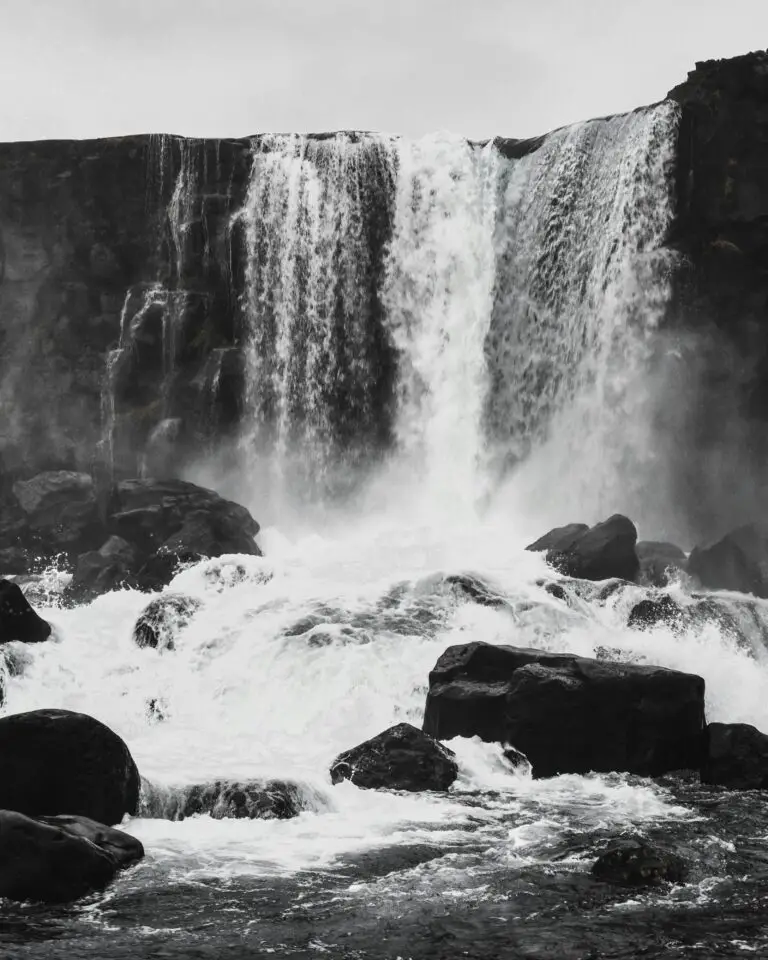
The fluid, behaving much like a seasoned artist, carries with it a cocktail of ions—nature’s building blocks. These ions slip seamlessly between the grains of the existing rock, driven by the gradients created by variations in temperature and pressure. In this high-pressure gallery, ions are exchanged, and minerals are replaced or reformed. The result? A rock that’s been utterly reimagined, showcasing an entirely new mineral fabric.
But the intrigue doesn’t stop there. These fluids are picky about their company. Depending on their composition—whether they’re rich in carbon dioxide or heavy with silicate minerals—their influence varies, leading to a mesmerizing diversity in metamorphic formations. Like a fine wine that embodies the unique characteristics of its vineyard, each metamorphic rock tells the story of its fluid interaction, bearing witness to the conditions it was subjected to.
Let’s take marble, for instance. Derived from the humble limestone, marble’s signature swirls and veins are the fingerprints of the fluids that coursed through, reshuffling the carbonate ions and granting the stone its characteristic luster and strength. Or consider the might of the blueschist, which flaunts its brilliant hue thanks to the specialized conditions and watery solutions that nurtured its formation.
Here then is the crux of our story: Without their fluid accomplices, sedimentary rocks might never attain the full splendor of their metamorphic potential. It’s the intricate interplay of liquids, ions, and earthly forces that script the dramatic transformation of these rocks. The next time you marvel at a slate roof or a granite countertop, remember the unseen, fluid-driven odyssey these rocks have been on—the tale of their creation is as fluid as the natural forces that forged them.
Real-World Implications: Why the Sedimentary to Metamorphic Journey Matters
Ever wondered how the Earth serves up such a diverse buffet of rocks and minerals? Let’s dive into the metamorphosis of sedimentary rocks and unearth the profound impact this transformation has on our blue planet. This isn’t just about rocks changing costumes; it’s about how these changes shape the world we live in.
The alchemy that turns sedimentary rock into its metamorphic counterpart is a remarkable process. It involves immense heat, colossal pressure, and the kind of chemistry that would make even the most seasoned alchemist green with envy. It’s this natural forge that gifts us with resources ranging from beautiful marbles used in sculpture to the slate tiles protecting your home from the elements.
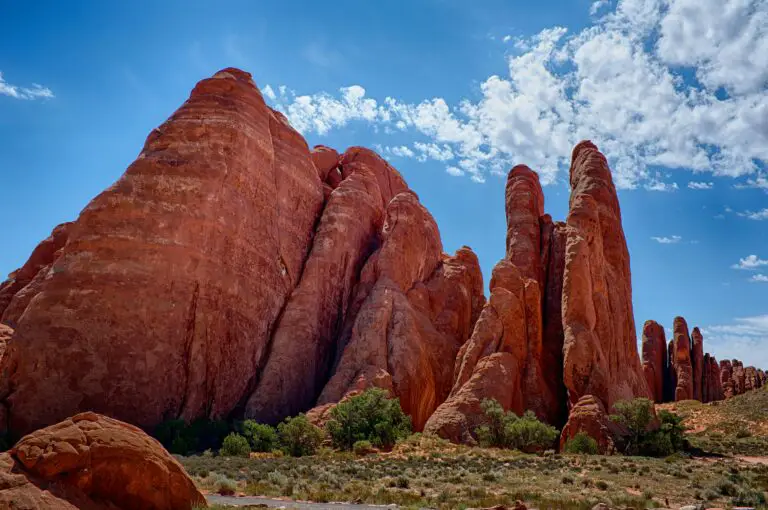
Take the grandeur of mountain ranges. These towering peaks owe their majesty to the dance of tectonic plates which squeeze sedimentary layers into stunning metamorphic creations, playing a pivotal role in carving the face of our landscapes. Consequently, the terrain dictates where we can build our cities and how we can navigate our planet.
Speaking of building cities, did you know that the durability of construction materials is a direct tribute to metamorphic rocks? The heartiness of these natural beauties means they’re not just a pretty face. They’re the bedrock of skyscrapers, bridges, and homes. Without the metamorphic transformation, our skylines might look a tad less impressive.
Beyond aesthetics and architecture, sedimentary rocks on the metamorphic journey also signal the birthplace of precious natural resources. Hidden within these rocks are pockets of wonders—oil, coal, and natural gas—fuelling our industries, keeping our lights on, and quite literally powering our world.
And let’s not overlook the role of metamorphic rocks in purifying our water sources. The intricate layers act as nature’s filter, ensuring that the water bubbling up in natural springs and wells is crisp and clear. It’s a little-known fact that our daily hydration has such a rocky backstory!
In summary, the next time you marvel at the landscape or appreciate the sturdy structure you’re living in, think of the incredible journey from sedimentary to metamorphic. These geologic processes aren’t just about changing one type of rock to another; they are fundamental to the very fabric of our lives, impacting everything from our environment to our economy.
Frequently Asked Questions
Ever wondered how a simple layer of river sediment can turn into a titan of geological history? You’re not alone! Let’s tackle some of the most burning questions about sedimentary rocks metamorphosing into metamorphic wonders.
What causes sedimentary rocks to become metamorphic?
Imagine sedimentary rocks as caterpillars, cozily wrapped in layers of sediment. Given time, pressure, and a dash of heat, these caterpillars transform, much like into butterflies, emerging as metamorphic rocks. This process, known as metamorphism, occurs deep within the Earth’s crust, where the pressure is about as intense as the last-minute rush during holiday sales, and temperatures are high enough to bake a pizza!
And just like baking, there are different “recipes.” Regional metamorphism happens over large areas and is the equivalent of a pressure cooker, fundamentally changing the rock’s character. Contact metamorphism, on the other hand, is more like a searing touch—focused and intense—occurring near magma intrusions where the heat is the main chef.
Can any sedimentary rock become metamorphic?
Think of sedimentary rocks as a diverse crowd at a rock concert—sandstones, shales, limestones, each with their ticket to the metamorphic show. But, not all will react the same way when they get to the VIP section (aka deeper Earth’s layers). Just like people, rocks have their breaking points; certain rocks under specific conditions can metamorphose, while others might simply crumble under the pressure and heat.
Do all changes happen deep underground?
Let’s go underground, but not too deep. Sometimes, the metamorphism party can start closer to the surface if the conditions are just right. For example, imagine a volcanic eruption as a surprise concert pyrotechnic that induces metamorphism. It’s like accidentally dropping your chocolate bar on a hot sidewalk—it’s going to melt and change, right?
Still curious? Here’s a visual feast that’ll show you how sedimentary rocks graduate to metamorphic status!
What’s the coolest metamorphic rock that used to be sedimentary?
Drum roll, please… Meet marble, the star of the show! Starting its life as limestone, this rock gets the metamorphic makeover to become the stuff of sculptures and palaces. Next time you marvel at the Taj Mahal or Michelangelo’s David, remember the metamorphic magic that brought marble to the spotlight.
Remember, just like every rock can tell a tale, every question leads to deeper understanding. Keep those questions coming, and let’s chip away at the mysteries of our planet’s rocky realm together!
